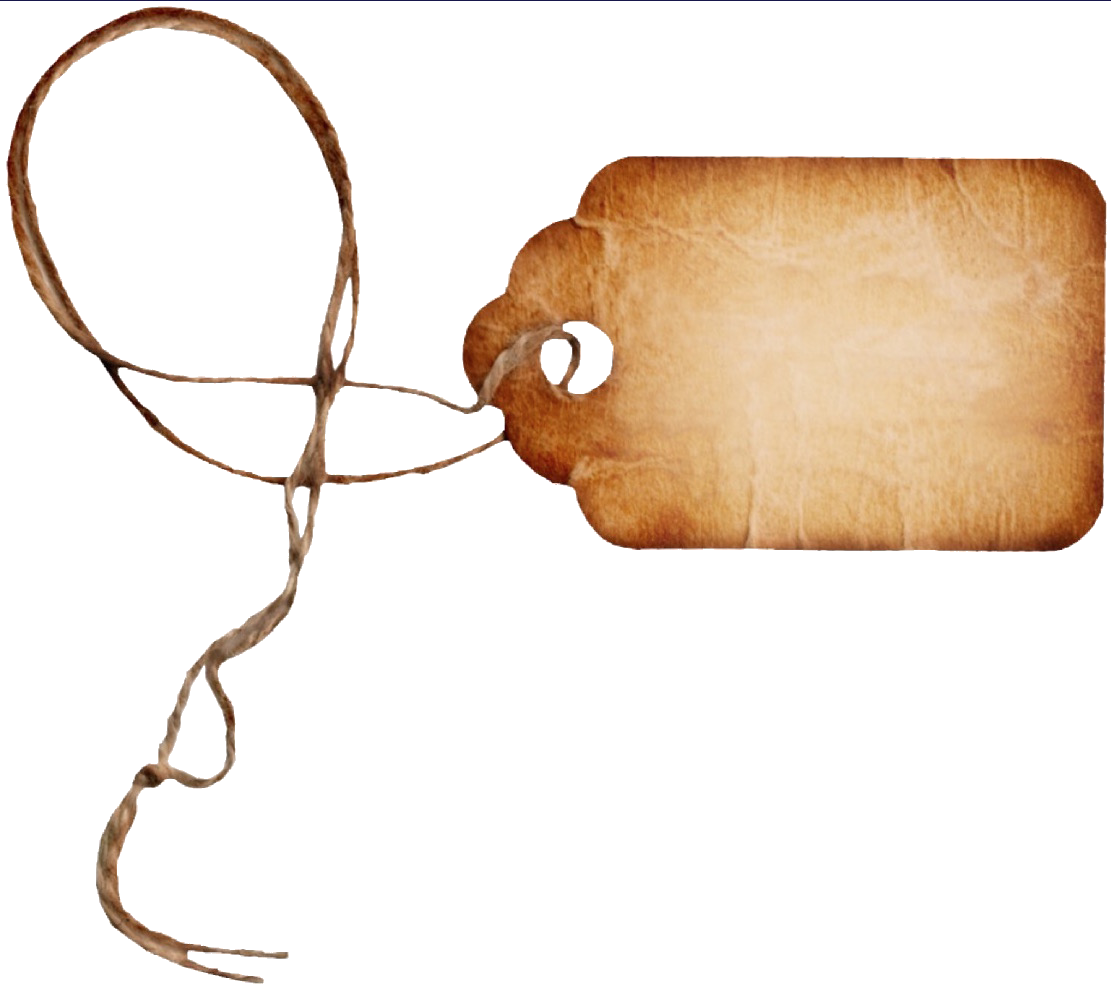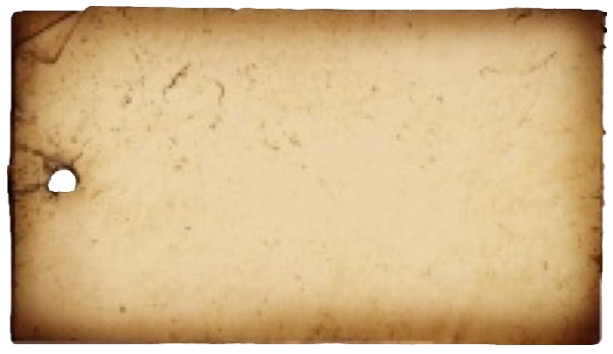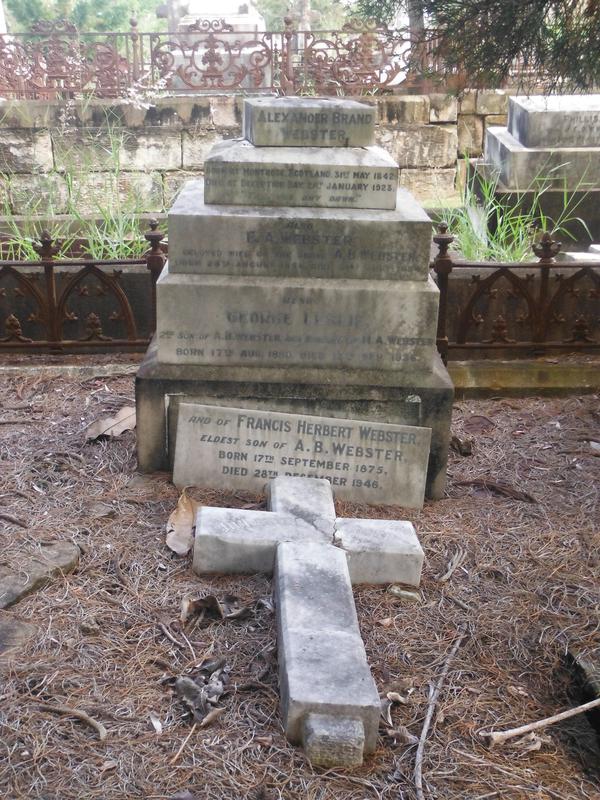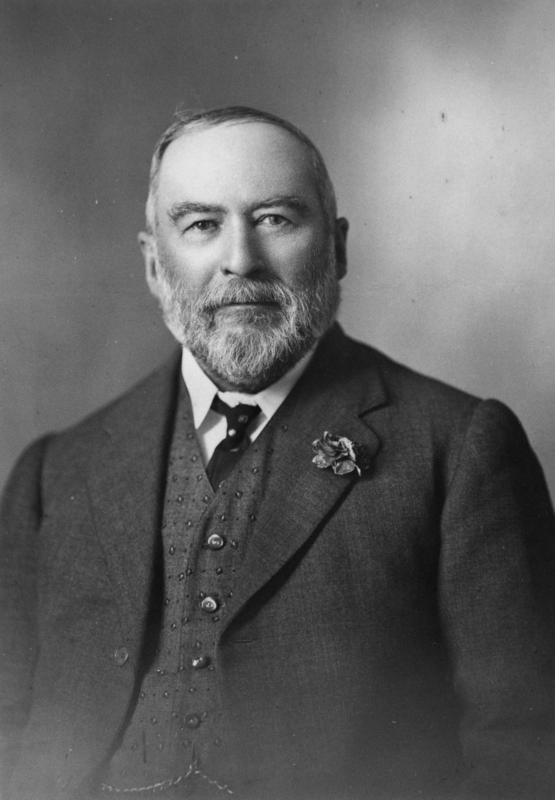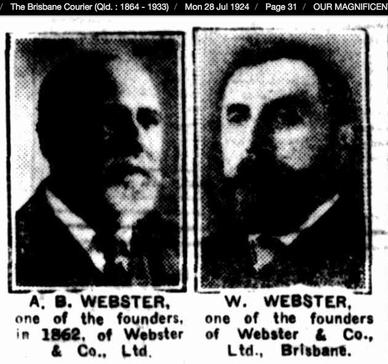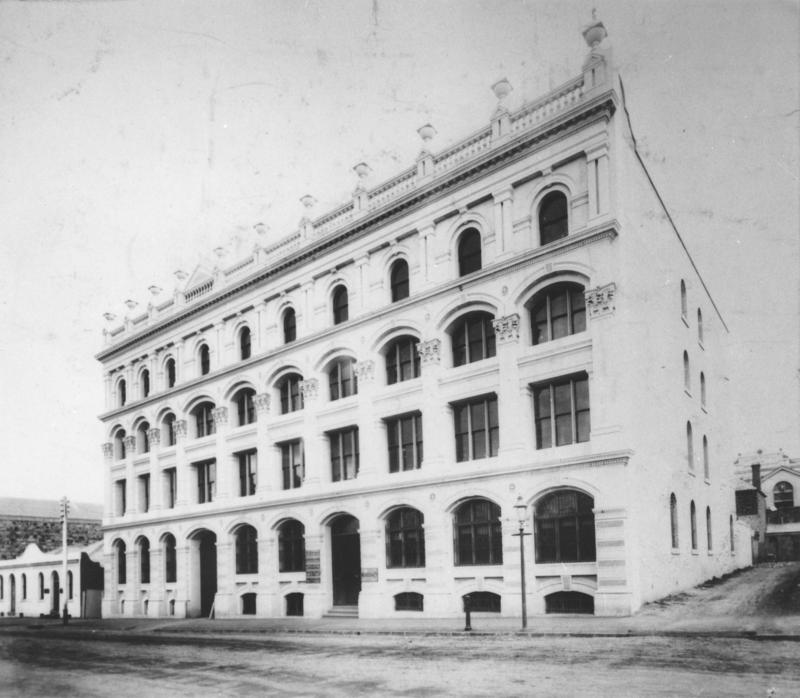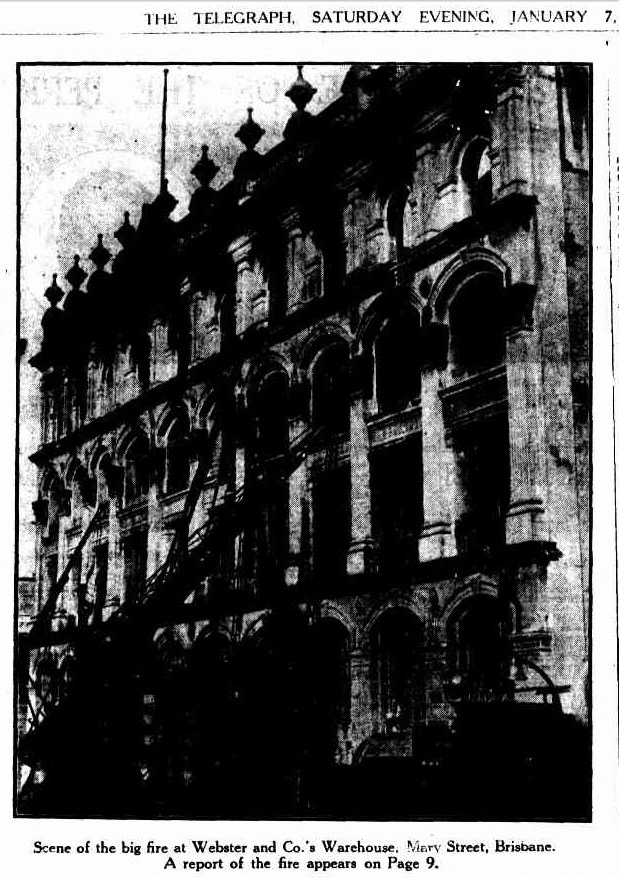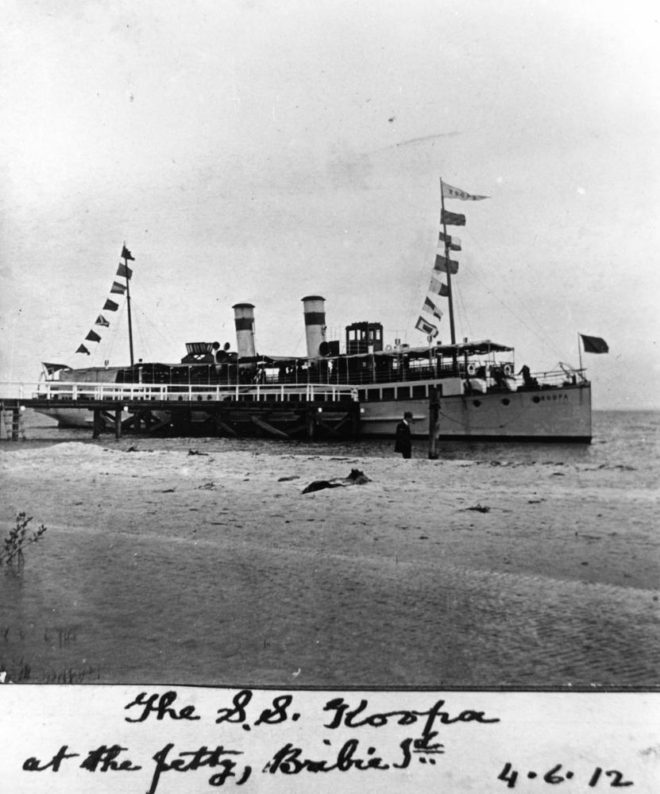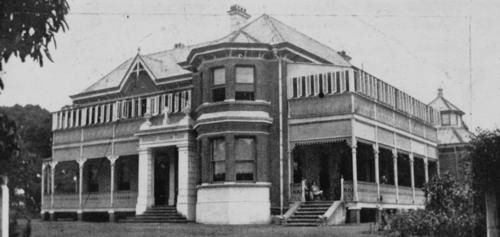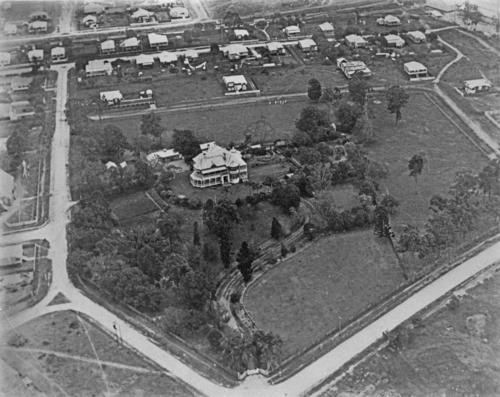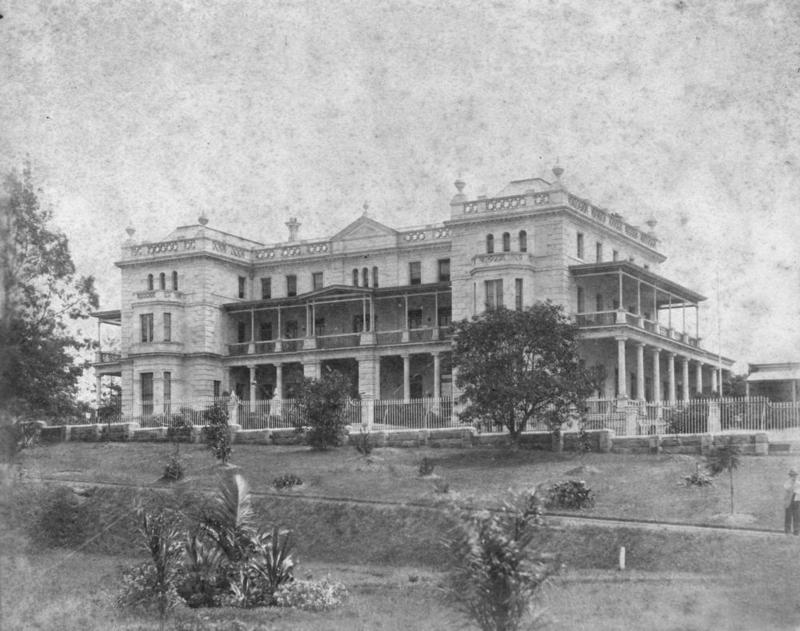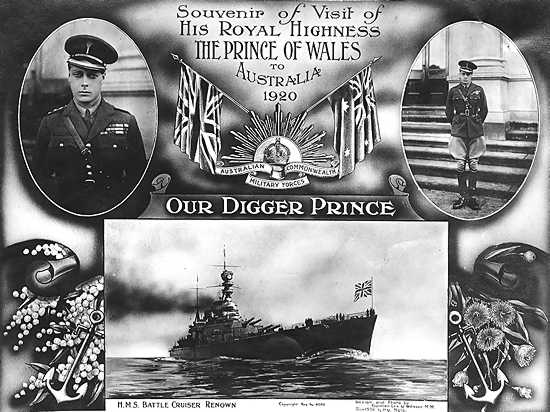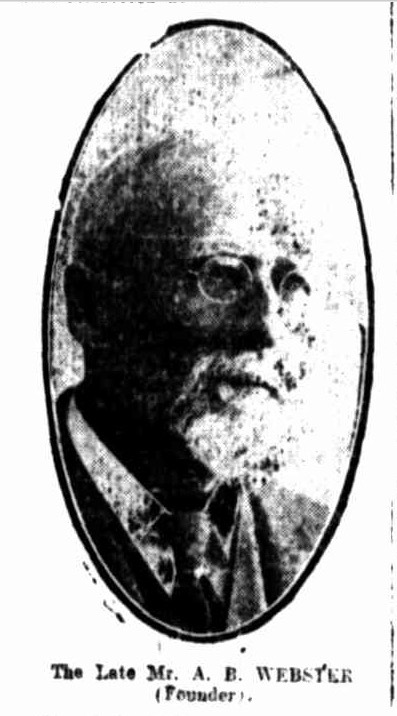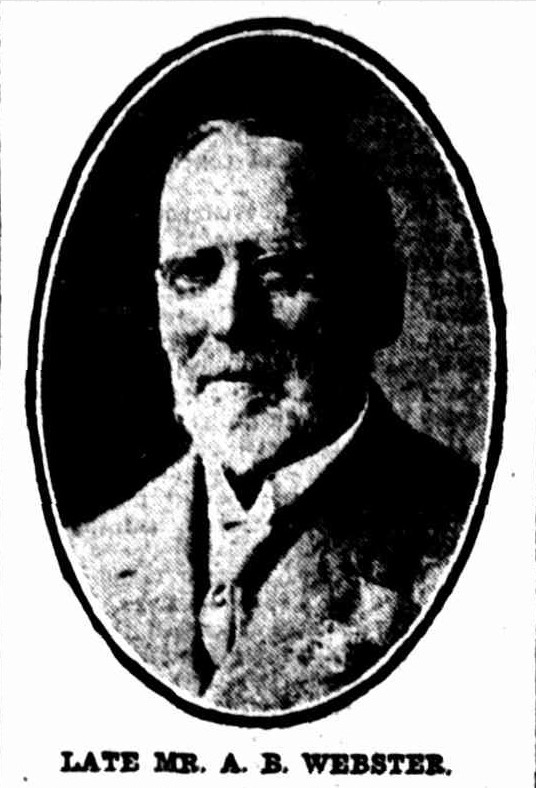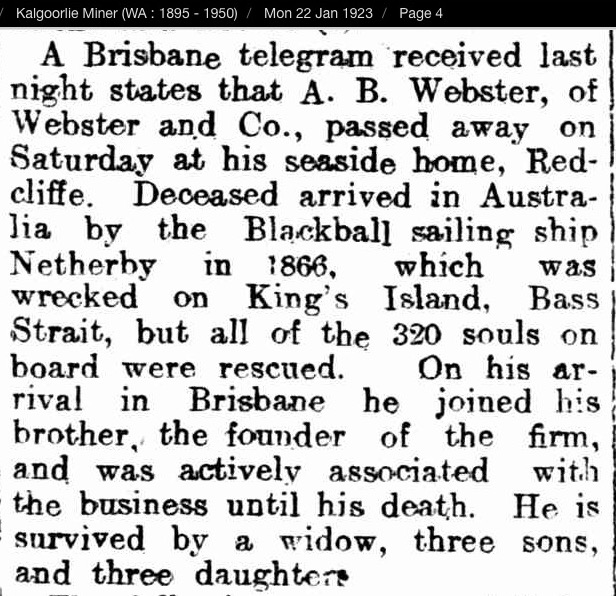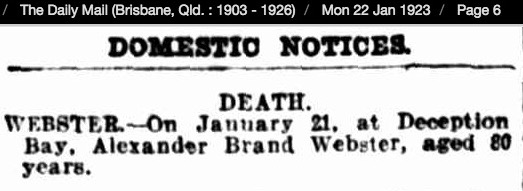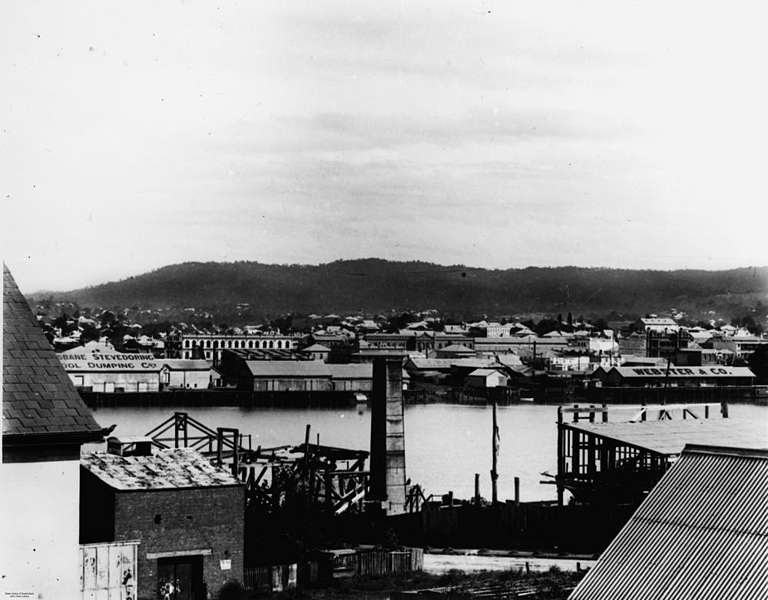Passengers stories
by their descendants.
Alexander Brand
Webster
The story of: Alexander Brand Webster. 1842- 1923. Age 24, saloon passenger.
Alexander Brand Webster (ABW) was born on 31st May 1842 at Academy Sq. Montrose, Forfarshire, Scotland. He was the 8th child of John Webster (B 23 Sept 1800 - D 10 Sept 1887) & Ann Brand (B 13 Sept 1806 - D 18 Feb 1878) who were married at Montrose on 23 Jan 1828.
Alexander was educated in Montrose Academy and he ran away from home to fight for Garabaldi (hazarding a guess this is Giuseppe Garibaldi, an Italian general, politician and nationalist. He was anti Papal and anti Catholic and attracted volunteers to his army forces from across Europe). ABW was brought back as he was under age and was sent to a job in a shipping firm at Liverpool.
Brother - William Webster:
- Mini bio: b. Dec 1828 – an elder brother of ABW was also educated at the Montrose Academy in 1842, which was founded by the late Sir Alexander Burnes C.B. F.R.S. of the Bombay army. After leaving school he went to England to engage in mercantile pursuits with the firm of Graham, Kelly and Co in Liverpool, before establishing his own business trading with the west coast of South Africa. He emigrated to QLD in 1862 bringing with him his existing business connections he had formed in Liverpool. He was initially a member of the firm Watson, Webster and Co, then Mr Watson died on the way to England in 1864. William then went into business with the firm Henry Box and Son for 5 years. William lived a quiet life. He was a founding member of the Chamber of Commerce in the 1870s, a Freemason and a member of St Patricks Lodge. He committed many acts of benevolence unknown to most. William died unmarried on 4 June 1895 after an illness lasting 14 months.
ABW wrote to his brother William and asked about an opening for a young man in Australia & William wrote back—“Yes, if prepared to work”.
So in 1866 ABW sailed in the sailing ship “Netherby” of 944 tons under the command of Captain Owen Owens. On the 14th July she struck a reef a few miles south of Currie Harbour, on King Island in Bass Straight. All that he saved was a tin of short- bread!
When he landed in Melbourne, the Salvation Army gave him a knife, fork, spoon and a New Testament. He managed to get a horse and headed for the gold fields in Victoria but had no luck (Note: this reference is from Deception Bay history. Other references show him as arriving in QLD on the City of Melbourne with other Netherby passengers). He then went to Gympie, Queensland and pegged a gold claim where the Gympie Post Office now stands, but again he did not strike a fortune.
He opened a store in Mary Street Gympie & sold tarpaulins, French brandy & miners candles.
On one occasion he was riding to Brisbane & rode down an embankment to cross what was known as the Lang Logging – 2 rows of logs filled in between with earth to make a road across the swamp. He was challenged by 2 bushrangers & would have been searched but one said to the other- “we have no time to search this man, the mail coach is just behind him”. They covered ABW with rifles- he crossed The Lang Logging – up the bank the other side & entered the bush. He galloped the 2 or 3 miles into North Pine- now known as Petrie & gave the alarm- a party of armed men, headed by police & the late Tom Petrie went out. They found the coach had been robbed- the bushrangers had made off taking with them a 5 pound note from one of the mail bags - which was all the booty they managed. The two men were caught & convicted some days later. ABW was carrying 300 pounds of gold dust in a belt round his waist! A lucky man. (Source of this anecdote is the Deception Bay history page).
WEBSTER & CO
After Gympie he went to Brisbane & joined his brother William where they established Webster and Co in 1870 in Mary Street. Initially dealing in wine & spirits. ABW obtained the agency from Scotland of Alex Cowan & Co. paper merchants - a firm that he had served as a boy. Webster & Co became contractors to the Queensland Government for paper and stationary and for many years a long business friendship continued between the firm, the Government printers and Queensland Government stores.
They had a warehouse built on Mary Street in 1876 costing 2700 pounds. It was two stories in brick and a basement made of stone, 80 feet deep and a frontage of 33 feet. The front of the edifice is surmounted with bold cornices in the Italian style of architecture, the basement floor is cemented and on the ground floor are commodious offices while a fine staircase leads to the upper floor with the intended use of a showroom. At the rear are large sheds for storage and stables.
On 11 August 1885 Webster and Co proposed to the Municipal Council Meeting an offer to lease vacant river frontage from Russell to the their property for ten years with a view to erecting a wharf. That wharf was obviously built as a later article on 28 January 1887 in the Morning Bulletin, reporting on the devastating Brisbane floods, refers to Webster and Co’s wharf adjoining the dockyard at South Brisbane being submerged to the extent of 3 feet yesterday, and despite the exertions of the firm and consignees, the damage to goods on the wharf has been pretty considerable and includes 300 casks of cement and a large quantity of salt.
They built (or extended) a new sizable warehouse in 1889. An advertisement appeared in the tenders and contracts column of the Courier 29 July 1889 for “warehouse and additions for Messrs Webster and Co, Mary Street 30 July. Mr G Cowlishaw, architect”. The building was erected on two allotments in Mary Street between Albert and Edward Streets and the photo circa 1889 shows it to be double the height and size described in 1876. The City Council Meeting works committee report in the Telegraph 26 Nov 1889 refers to a request from Webster and Co for construction of a brick drain in Mary St between Edward and Albert streets at such a depth to admit the drainage of the cellar of their new stores. The engineer refused the request based on expenditure (it would cost 27 pounds!).
An article assessing the damage of another serious flood along the Brisbane River in the Telegraph 15 March 1890 reports that Webster and Co’s chief loss is the expense involved in the employment of labour to put things in their places. The ground floor of their warehouse escaped entirely and their bulk store a few yards off had only about an inch and a half of water in it.
An article in the Telegraph 7 Oct 1890 refers to the near completion of the new Mary Street warehouse and refers to the magnificence of the warehouses that have replaced disreputable shanties. It describes a frontage of four stories above the basement in Corinthian design. With stained glass windows and polished cedar fittings and panelled stencilled ceilings. The furnishings and fittings have the character of those found in first class banking premises than in an ordinary warehouse. It will be fitted with three Otis elevators. Detailed flood protection has been constructed with extra drainage systems throughout. The building when complete will have a frontage along Mary Street of 116 feet and a superficial area of over 40,000 feet. Messers Webster and Co will not only have provided for their rapidly increasing requirements, but they will have raised for themselves a monument of which they might well feel proud.
Yet another serious flood was reported in the Courier 10 Feb 1893 which stated; Webster and Co, taking into consideration the position of their premises in Mary Street, have suffered but a trifling loss. Almost everything likely to be damaged by the flood waters had been removed from the cellars up to the first and second floors. The greatest damage sustained was in the offices on the ground floor. In the bulk stores a quantity of heavy stock was more or less damaged. The river level continued to rise and it was reported in the Courier on 22 Feb 1893 that a huge bank of sand blocks the entrance to Messers Webster and Co’s wharf.
On 30 Aug 1894 The Queensland Times reported a serious fire the night before in the warehouse. The fire brigade were promptly on the spot and succeeded in preventing the destruction of the building. General merchandise and the stationery department were lost, more from the water damage than the fire. The loss was estimated at approximately 1000 pounds. The company wrote to the Courier on 6 Sep 1894 to express their high appreciation of the fire brigade for saving the warehouse and gave a cheque of 25 pounds in recognition of their services.
The flood prone Brisbane river again rose high and it was reported in the Courier on 14 Jan 1898 that smart work was done at Websters wharf in saving materials from the flood including the removal of 6000 casks of cement using 109 drays. This was in addition to the preparations made in the firms cellars. Men worked straight through two nights readying everything for the floods.
The Courier wrote a detailed article about the various wharves both public and private along the Brisbane River on 3 Oct 1903. It noted that Webster and Co’s South Brisbane wharf has a frontage to the river of 264 feet and ample room for expansion and a depth of 22 feet at low water. On the wharf there is an excellent enclosed galvanised iron shed capable of holding 3000 tons of cargo, while another shed measures an area of 100 feet. As the agents for the China Navigation Company it is their custom to discharge cargo into lighter vessels at Moreton Bay first but quite recently the steamer Taiyuan of 2300 tons, was brought up the river and berthed at the wharf.
A notice in the Telegraph 25 May 1904 mentioned the converting of the firm Webster and Co into a limited liability company with capital in private shares totalling 150,000 pounds. ABW is mentioned as the governing director (with his wife and sons George and Francis listed as directors).
In an article in the Courier 5 April 1913, reference is made to ABW being a capable and genial chief on untiring energy and fine physique, and the close personal supervision of such a large company entails a heavy strain and makes demands that cannot be denied, so he has been persuaded to take a trip back to the UK to renew old friendships from his youth. The article refers to the company now having branches in Marysborough, Bundaberg, Rockhampton and Townsville, handling all classes of merchandise, and export grains, ores, butter and meats. An article in the Morning Bulletin 12 April 1913 refers to the members of the Brisbane Chamber of Commerce gathering for a large farewell event prior to his departure on 1 April aboard the Orama. He was referred to as a strong and powerful personality in Brisbane for 50 years, and the embodiment of commercial honour, integrity and uprightness. In private he and his wife were “princes of hosts”.
He gave a thank you speech where he thanked everyone for leaving their businesses for the day to give such warm remarks. He reminisced about the scenes in Brisbane 50 years ago. He had great faith in the future of the city and the state. The best ocean going vessels now visiting its ports in marked contrast to even 10 years earlier and the Chamber was largely responsible. He felt the Chamber had not always been as appreciated as deserved and that it should be a political body to guide the destinies of the state. He contrasted the alleged scarcity of money today with the real scarcity in 1865 which was relieved by the discovery of the Gympie goldfields. The dairy industry of today however was worth 20 Gympies.
Several years after ABW’s death, the company was still being run by his sons. A serious fire the previous night was reported in the Telegraph 7 January 1928. Described as the worst structural blaze Brisbane has experienced in many years, where once a four story building stood housing valuable stocks, there is now only a cracked and blackened shell. 40 firemen worked through the night to the point of collapse but were unable to save it. Employees entered the building to retrieve books and documents for the directors, assisted by firemen. There was a report of a delay at the telephone exchange in reporting the fire. The total insurance on the building stock and fittings came to 104,477 pounds. Heavy rain storms assisted the firemen in quelling the smouldering flames. The flooded cellars were guarded by an officer of the Customs Dept as large quantities of bonded wines and spirits were stored there. Watchmen worked for several more days as the mass of flammable stationery kept reigniting.
ABW’s son Frank was quoted as saying 50 or 60 employees were affected and on duty assisting to straighten out some of the salvaged documents, describing it as creating order out of chaos. He intended to make early arrangements to carry on the business. A neighbouring firm Messrs Perkins and Co provided temporary office space for the directors to commence re-establishing the business.
A salvage sale was advertised in the Telegraph on 30 Jan 1928 for undamaged stock consisting of dinnerware from England’s most renowned manufacturers, thousands of fine china tea sets, cases and cases of china cups and saucers, china and glass salad bowls, vases, jugs of all sizes, and miscellaneous goods such as tools, household ware, cases of ink. The sale was featured in a full page advertisement complete with illustrations.
An enquiry into the first was held in August. Witnesses and fire officers could not recall anything suspicious. The fire appeared to have started between the first and second floors but nothing indicated the origin. The electric light switches were cut off from the main switch at the door so fusing was not found to be a cause. Cartons of matches were found undamaged. The enquiry was closed with a finding of accidental.
A sketch appeared in the Telegraph 22 Sep 1928 of the proposed partial reconstruction of the building. A photo of the completed building and article appeared in the Courier 19 March 1929.
The company was wound up in May 1936, long after ABWs death, after the Bank of Australia appointed a receiver. The building was advertised for auction in October 1946 by the mortgagee.
The era of the longest running merchant in Brisbane by a single family was over.
FAMILY
ABW returned to England in the year 1874 & married Mary Ogilvy Jane Christian Savage of Douglas, Isle of Man on 5 Nov 1874 in St Johns Episcopal Church, Dumfries and returned to Australia on the S.S. Murzapore departing Liverpool 11 July 1875.
Their eldest child Francis Herbert was born 17 Sep 1875 a few days after arriving in Brisbane and they lived in Leichhardt St Brisbane. Their next home was Kindar on the bank of the Brisbane River on the corner of Toorak Road at Hamilton.
Daughter Mabel Ann was born 26 Nov 1878 (Married Dr Reginald Crofton-Atkins 19 Mar 1902, service conducted by Rev WA Crofton-Atkins, father of the groom. D 30 June 1963).
Son George Leslie 17 Aug 1880 (Married Marion Annie Young, known as Queenie, in Sydney 9 June 1909. D 13 Sep 1936. Businessman, director of his fathers company and amateur actor).
In 1881 they went to Hobart where his wife Mary (known as Minnie) died on 9 Nov 1881, just six months after George was born.
On 20 August 1884 in Hobart at the Holy Trinity Church, he married Evangeline (known as Lena) Andrew Shoobridge (daughter of Richard Shoobridge, Esq and Mary Wood or Clydesdale, Glenorchy, Tasmania). The bride’s brother Rev. GW Shoobridge (later Canon) performed the ceremony. ABW and Lena moved back to Brisbane where all their children were born.
- Harold and Richard, twins born premature (B 5 Jun 1885 – D 5 Jun 1885),
- Birth notice for an unnamed girl born 12 Jan 1889 – possibly Mary brand below..
- Mary Brand (B 12 Nov 1889 – D 14 May 1960) (fact checking – death notice dated 9 Dec 1889 refers to death of 10 month old Mary Brand Webster),
- Alick Kingsley (known as Kingsley, B 14 Nov 1890. Married Dorothy Burston 15 May 1920, referred to incorrectly as Kingley in marriage notice. Fought in WW1 in the Transport Corps AIF. D 14 May 1960),
- Hilda Mary (B 20 Dec 1892. Engaged 24 Oct 1918 to Capt H D Parry-Okeden who served with the Light Horse then the Flying Corps during the war. Married 10 Feb 1920. D unknown),
- Alison Brand (B 12 Oct 1894. M 2 Apr 1925 to TJ Cullen of Emerald Downs. D unknown).
WHINSTANES - home
ABW built Whinstanes on College Street and Pinkenba Road in what is now Eagle Farm, Brisbane QLD in 1886, chartering a sailing ship with friends John Flower & Mr Sword to bring out furniture from England. The furniture was from the firm of Maple & Co Tottenham Court Rd London. The man who bought the furniture out was either Mr Beard or Mr Watson & he was so impressed by Australia that he went to Sydney & founded the firm of Beard, Watson & Co 1887
The property was named after he was walking the paddocks and he noticed the “whin” (bushes) & “stanes” (stones).
The 15 acre property and home was the scene for many high society functions hosted by ABW and wife Lena, and the gardens were opened for annual school picnics and charity events.
The gardens were described in an article about historical homes in 1931 in The Queenslander as several acres of flat land (a deep oval of lawn) in front of the home giving a pleasing view of the river and houses and hills beyond. The garden is charming with many beautiful trees, shrubs and palms growing in the inner and outer grounds, with fascinating arbours and a delightful bush house with a goldfish pond and a centre fountain. Further out there is a paddock where cows are pastured. The main entrance is through a handsome porchway supported by stone blocks. The house is brick with stone foundations and corrugated iron roof. It is two stories with verandas and balconies on nearly all sides. The front door is massive and wide and possesses a chain (not seen on any other Brisbane house) for putting up to prevent the door from being opened for that a few inches. (One gets the impression that this rare innovation was to provide peace to Mrs Webster after the settlement of an Aboriginal camp was established nearby on the river). From a spacious vestibule there leads handsome cedar staircase. Halfway up is a beautiful lead light window on which is represented the Webster coat of arms and motto ‘Vincint Veritas’.
Whinstanes railway station was built within the grounds in 1882 to the Eagle farm racecourse.
The family lived here until Alexander’s death in 1923.
The suburb was known as Whinstanes for many years before becoming Eagle Farm.
After ABW’s death the house and remaining 9 acres of land were sold in 1925 to Our Lady of the Sacred Heart who established College Whinstanes, which opened as a Junior Boys Boarding School. In 1941 OLSH Whinstanes was closed. In the midst of WWII it was considered unsafe to house the children so close to the petrol storage facilities located near the Brisbane River.
The college premises were taken over by the 738th Military Police Battalion US Army. Camp Whinstanes was a US Military Stockade for US Military personnel who were being punished. The MP's were housed at this complex as well as Wacol.
After the war the OLSH sold the house and land in 1947 to the Augustinian Order who was establishing its first Australian College for boys. It was named Villanova College. Whinstanes functioned as three classrooms, a chapel and sacristy. Students also had access to tennis courts, cricket oval and other sporting facilities.
Forty boys attended Villanova that first year and by 1951 it was clear the Whinstanes property could no longer adequately house the growing student population. After much searching, the Augustinian Fathers eventually chose Coorparoo as the new site for the College in 1954
BOONDAR – holiday home
ABW also purchased 50 acres of land in what is now Deception Bay in 1886 and built a holiday house named Boondar after what he believed was an indigenous name meaning kangaroo. The house was a typical gentleman’s seaside residence – a high set weatherboard Queenslander with a central brick fireplace. ABW took a great interest in the local community, establishing the first life saving patrols in 1924 and in 1929 he constructed a bowling green and tennis court for public use.
A survey of the property in 2000 recognized it to be surrounded by a garden containing an ornamental lake, mature bunya, fig and mango trees as well as a bamboo clump, guavas, roses and clivias. A section of the split rail fence had survived and the grand driveway leading up to the house was lined with camphor laurels. A dense stand of cotton trees separated the house garden from the esplanade with a boat shed built on the foreshore and a channel cut for access to deep water.
ABW and his family made regular return trips to the UK to visit family, sometimes for a couple of years at a time. In June 1882 The Queenslander reports his friends gathering to toast his health before he pays a visit to the old country. In March 1891 the employees of Webster & Co gathered to celebrate the completion of their new warehouses and to wish ABW bon voyage on his journey to England.
TUG AND EXCURSION STEAMER BUSINESS:
Webster and Co purchased the steam tug Otter in 1884. The tug departed Leith Scotland 21 August 1884 and was due to arrive in Brisbane on 20 October according to the Courier 21 October 1884.
An article in the Telegraph refers to ABW entertaining the managers of various departments of Webster & Co at a schnapper excursion on board the Beaver. Another article in the Courier dated 26 Nov 1884 refers to the steamer being built by Messrs Ramage and Ferguson of Leith Scotland for Webster and Co and ABW entertaining an influential company of 50 gentlemen attending by special invitation. Distances down the river were timed and the full capabilities of the vessel were tested. A grand luncheon was served and ABW toasted the Queen and Royal Family. He discussed to history of tug-boats on the Brisbane river dating back only 20 years and consisting of 3 other vessels until his company brought out the Boko and the Otter after his brother William noticed two or three years ago that the trade was increasing. They wanted to supply a serviceable boat with good passenger accommodation for the river trade. Despite the sunny day ending in a rainstorm the gentlemen disembarked down the Webster’s own wharf pleased with the tests.
After the death of brother William, ABW formed the Brisbane Tug & Steamship Company (Brisbane Tug Company Limited) in August 1903 with the existing vessels Beaver, Otter and Boko and he later brought out from Scotland and England the Koopa, Doomba, & Greyhound.
The company was described in The Brisbane Courier 4 Sept 1903 as “possessing a fleet of first class tug and passenger steamers and the development of the excursion business will be made a special feature in future operations”.
The Beaver was described in the Courier 3 Oct 1903 as a twin screw steel vessel of 222 tons gross, built in Leith Scotland and captained by Capt William Bruce. A powerful up to date tug and favourably known as a speedy excursion steamer, certified by the Marine Board to accommodate 400 persons in the bay and 700 in the river. She has two fine saloons and in intended to be fitted with electric light throughout.
The Boko, mentioned in the same article, in the command of Capt James C Farmer, is an iron paddle wheel vessel of 203 tons gross, built in Hepburn England. A powerful tug also to be used as an excursion steamer and certificated to accommodate 253 persons in the Bay and 506 in the river.
The Greyhound was captained by Capt FW Bedford, a wood screw vessel, built in Balmain Sydney and well fitted out as an excursion steamer, certificated to carry 255 in the Bay and 450 in the river.
The launch of the excursion ship Koopa was mentioned in the Courier 5 June 1912 where ABW was quoted as inviting the shareholders onto the steamer to inspect their own property on a trip to Bribie Island, and that the Koopa was an up to date boat and for her size had no superior for comfort and speed in Australia. The directors had put two years of thought into her design. They had also gone to the expense of erecting a jetty on Bribie Island with a view to also providing future holiday accommodation there in the hope the public became attracted there. ABW expressed hope that the Koopa would bring thousands of people to Bribie Island during the summer.
The Koopa plied the waters of Moreton Bay for over 40 years.
COMMUNITY CAREER, CLUBS & SOCIETY
His career choices detailed below give the impression of a busy community minded man. Social pages make many references to he and his wife attending the opera, theatre and social events.
ABW is referred to as one of the directors of the QLD Brewery in various articles, and mentioned as the chairman in The Courier 7 June 1888 at the first ordinary general meeting.
There are references to ABW being a magistrate appearing in the City Police court roster in The Telegraph 3 May 1890 and other dates through 1890.
He is also mentioned as a trustee and executor of many deceased estates. I found reference to the registration of the Australian Natives’ Trustees, Executors, and Agency Company Limited, of Melbourne, noted in The Week 30 June 1888. Mr Alexander Brand Webster of Webster and Co is listed as a director. In 1889 (17 July in the Telegraph) the company amalgamated with two other trustee companies to form the Union Trustee Company of Australia Limited with ABW listed as a director.
Reference made to W Webster being elected Auditor of QLD National Bank 30 June 1882, replacing AB Webster. Maryborough Chronicle 1 July 1882. He was nominated for board of directors of the Royal Bank of QLD, mentioned in The Telegraph, 4 Nov 1885. Appointed as director of QLD National Bank in May 1890 after being an auditor for many years. Further references 25 July 1895 in the Bundaberg Mail Mr AB Webster, retiring director, unanimously re-elected. Reference to his retirement from the board is in The North QLD Register 10 March 1897.
He attended the 1898 Royal Commission investigating the collapse of the Bank of QLD during the 1890s depression, in his role as a former director and auditor. All directors were found not guilty as reported 12 November 1898.
He became the Consul for the Kingdom of Hawaii when the Consulate was opened in Brisbane 27 June 1885 and remained in the role until Dec 1898.
The following three committees are mentioned but I have not confirmed they are definitely the same ABW though the likelihood is that they are. Board member of the Acclimatisation Society – referenced in The Telegraph 28 July 1888 &The Queenslander 18 May 1889. Vice President of the Horticultural Society of QLD per articles in The Week 16 April 1887 and the Queenslander 18 May 1889. Named as one of the vice presidents of the Caledonian Society and Burns Club in The Telegraph 25 Oct 1895.
He was President of the Brisbane Chamber of Commerce (mentioned in news articles in 1877 – mentioned as resigning to travel to England, rejoined the committee in 1880, referred to as a member in 1893, referred to as President in 1894 & 1895, referred to as Vice President in 1905 – 1907, referred to as member in 1908).
ABW was President of the Queensland Club in 1906 & entertained Vice Admiral Poole there. He was also Vice President in the years 1894 & 1905.
When the Brisbane Scottish Society was formed in September 1911 (under the auspices of the QLD Scottish Union), ABW was named as a life member.
His Royal Highness the Prince of Wales, Prince Edward (later Edward V111, Duke of Windsor, “Edward & Mrs Simpson”) visited 110 cities and towns in Australia between late May and August 1920.
ABW and his wife Lena entertained the Prince at a grand society ball at Whinstanes on 3 August 1920. The lawns and gardens were illuminated with Japanese lanterns and tiny coloured lights and masses of flowers. The reception rooms and drawing room were filled with great bowls of scented flowers and tall vases of scarlet gerberas. The Prince had the first dance with ABW’s daughter Alison who wore pink satin charmeuse with draped tulle sash. The Prince remained til 4am and seemed to heartily enjoy himself.
A news article dated 23 November 1920 refers to him attending the consecration of the Ark Mariners Lodge with fellow Freemasons.
DEATH & OBITUARIES
ABW passed away about midday on 21 Jan 1923 aged 80, in his seaside holiday home, Boondar on Webster Rd Redcliffe (now know as Deception Bay).
Obituaries referred to him as a pioneer and the doyen of the commercial community and the eldest surviving member of the Brisbane Chamber of Commerce. He enjoyed good health and a fine physique until 10 days prior to his death. He had a commanding personality and possessed an untiring energy. He was associated with his company Webster & Co as chairman right up until his death and was the oldest established merchant in Brisbane.
His funeral cortege left from Whinstanes House to the Toowong Cemetery on 22 January 1923. (Grave location 1-37-6). The funeral was attended by a huge selection of Brisbane society representing every phase of commercial and public life. The cortege was met at the gates of the cemetery by the entire male staff of Webster and Co who marched alongside the hearse to the graveside where the service was conducted by Canon Osborn.
His estate, valued at 37,103 pounds, was granted probate on 9 October 1923.
His widow Evangeline (Lena) passed away 31 July 1934 and had been living with son Kingsley in Deception Bay for some time.
Karina - Web Admin Notes: I have not yet been contacted by any of ABW’s descendants in the years since I built this website. I came across a small bio on the Deception Bay Heritage website which struck my interest and then did my own research in Trove and other genealogy and history sites to build this biography. I have endeavoured to list all the resources below the biography.
I have also created two more pages to hold the many news articles about ABW, his family and his business HERE
Update: August 2018. Contacted by David Webster, great grandson of ABW. Lovely to have another Netherby descendant in contact.
Sources & references:
National Library of Australia: Trove
State Library of Queensland
Deception Bay Heritage: History of property Boondar. Recollections on the Webster Family by H Parry-Okeden.
History of Businesses in QLD - Webster and Co referenced in detail. Aldine History.
Army use of Whinstanes: Oz At War site.
Whinstanes use as a college - Link
Use of Whinstanes by the Daughter of Our Lady of the Sacred Heart - History
History of Whinstanes the suburb - Link
History of Villanova College - Wiki
Consulates in Brisbane - a history.
Mentions of an old exhibit at Bribie Island Seaside Museum about the original Koopa excursions - Link
Source of photo of the Webster & Co Wharf photo 1902 - Link
News clippings about 1994 reunion of boys who lived at Whinstanes when it was a college - Link
Microfiche details for ABWs will - Link
Headstone at Toowong Cemetery. Photo by MBeaven Find A Grave member
ABW, Year unknown. Out of Copyright. State Library QLD.
Webster & Co Mary St 1889. Out of Copyright. State Library QLD.
1928
State Library QLD
Whinstanes frontage and from above. State Library of QLD
The Queensland Club built 1888 cnr Alice and George Sts Brisbane. Still standing today. Photo from State Library QLD.
I have created two extra pages to hold all the many interesting news articles I found while researching ABW and his fascinating life.
1902. Webster and Co wharf buildings - far right middle. Taken from South Brisbane side. (Photo from the Bonzle Collection).
